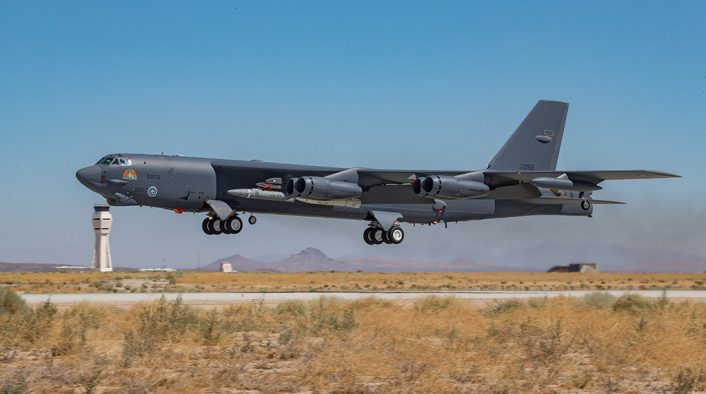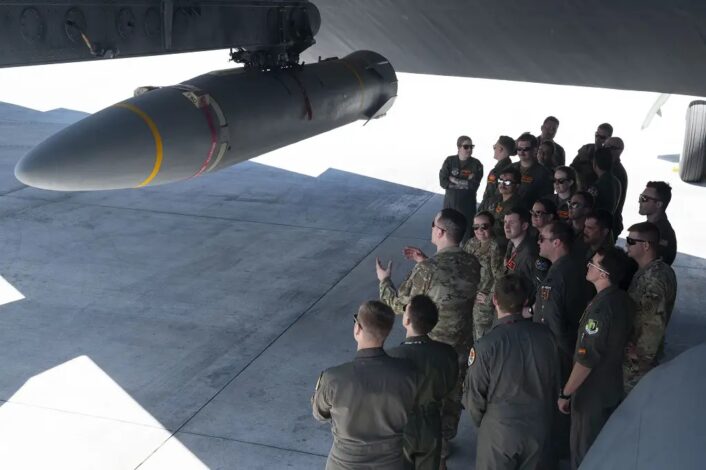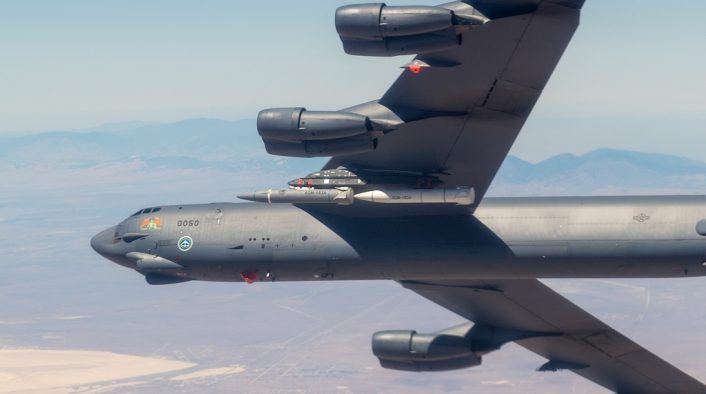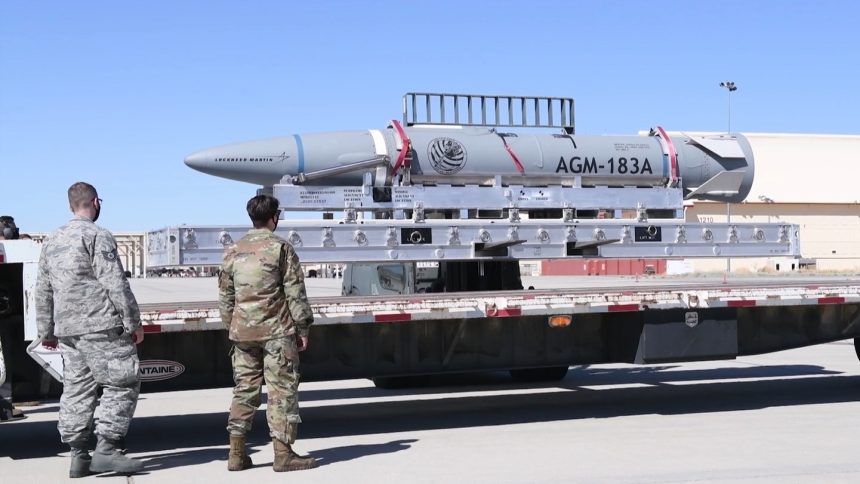Gen. Allvin hinted that the service might resume working on the AGM-183 ARRW hypersonic weapon, after previously stating that it would not be procured.
After previously stating that it would not procure the weapon, the U.S. Air Force might have had a change of heart and decided to continue working to procure the AGM-183 Air-Launched Rapid Response Weapon (ARRW). This was hinted by Chief of Staff Gen. David Allvin during a recent House Armed Services Committee hearing while detailing budget proposals for hypersonic weapons.
Bring back the ARRW
“I will tell you that we are developing — and you’ll see in the budget submission, assuming it’s what we put forward — two different programs,” said Allvin. “One is a larger form factor that is more strategic long range that we have already tested several times — it’s called ARRW.”
The ARRW program, now completed, faced an uncertain future as the U.S. Air Force was planning to abandon it and focus instead on the Hypersonic Attack Cruise Missile (HACM). However, following Gen. Allvin’s statement, it appears the AGM-183 might get another chance to be fielded to operational units.

In fact, the General said the plan includes “continuing to develop and moving beyond” the research and development phase and “getting into the procurement range in the very near future.” He further stated “we are accelerating in our development not only of the technology, but of the procurement of the capabilities that it will create.”
While the ARRW program had a troubled story, with multiple failed test, it was nonetheless fundamental to collect data which would help mature hypersonic technology for future programs. The data, if the service confirms the intention to procure the ARRW, would be crucial to solve deficiencies of the weapon and further refine the design before fielding.
In a period where budget constraints are a fundamental part of military procurements, the cost of the AGM-183 ARRW is an important part. The goal is, in fact, to develop affordable hypersonic weapons for mass production, as mentioned by Air Force Secretary Troy Meink on the same occasion.
“It’s got to be affordable,” said Meink. “We’ve got to be able to buy more than 10 of these things. A big focus right now is ramping up the production and lowering the cost so we can get enough of that kit to actually make a difference.”

The AGM-183 ARRW
The AGM-183A ARRW is based on hypersonic glide vehicle technology derived from the Air Force and Defense Advanced Research Projects Agency (DARPA) Science and Technology (S&T) Demonstration known as Tactical Boost Glide (TBG). A fragmenting glide vehicle is launched from a conventional rocket, or more precisely a Solid-Rocket Motor (SRM) booster, to the upper atmosphere and, once it reaches hypersonic speeds, it separates from the rocket and glides to its target at speeds up to Mach 15. At these speeds, there is no need for a conventional explosive warhead as the kinetic energy alone delivered during impact would be enough to destroy most targets.
The Air Force also defined the ARRW as an “operational hypersonic air-launched weapon enabling the U.S. to hold fixed, high value, time-sensitive targets at risk in contested environments from standoff distances.” The missile would have provided a survivable, lethal, long-range strike capability to go after high-end capabilities of a potential adversary, such as deep-inland strike against targets of strategic importance and coastal strike against high-end systems. Initially, the expected introduction in service of the AGM-183 was planned for 2022.
In 2023, the Air Force said it does not currently intend to pursue follow-on procurement of ARRW once the prototyping program concludes, adding that there is inherent benefit to completing the all-up round test flights to garner the learning and test data that will help inform future hypersonic programs. The decision apparently was influenced by the latest test flight of the missile at that time, which ended with another failure. The FY 2025 Budget Request also did not include ARRW.

Although the Air Force decided in April 2023 to not pursue the procurement of the weapon, the Director, Operational Test & Evaluation report mentioned in 2024 that the ARRW program has shown preliminary indications that it could become an operationally lethal weapon, however the lack of terminal characterization data to date, due to technical failure of the test range sensor systems in the December 2022 test and the shroud not ejecting in March 2023, does not yet allow for a full assessment. Preliminary info released from the August 2023 test’s data analysis say it achieved nominal conditions.
The report continues saying that, given the limited number of planned test events, there is a risk that the test program will not be able to demonstrate the ARRW lethal effects against the required tactical and strategic targets. The survivability assessment estimated the probability that a single ARRW will complete its mission, given the capabilities of various early warning radars, surface-to-air missile systems, and anti-aircraft artillery batteries to detect and engage ARRW in various one-on-one scenarios, indicating that it will meet its survivability requirements.
The test conducted from Guam in 2024, which saw the launch of a live AGM-183 at the Reagan Test Site in the Pacific, was considered to be the last test of the hypersonic weapon. The test was significative as it represented the first time a U.S. hypersonic weapon was seen this close to China, and was supposed to replicate an operational mission where the bomber flies for 4,000 km before launching the hypersonic weapon.









